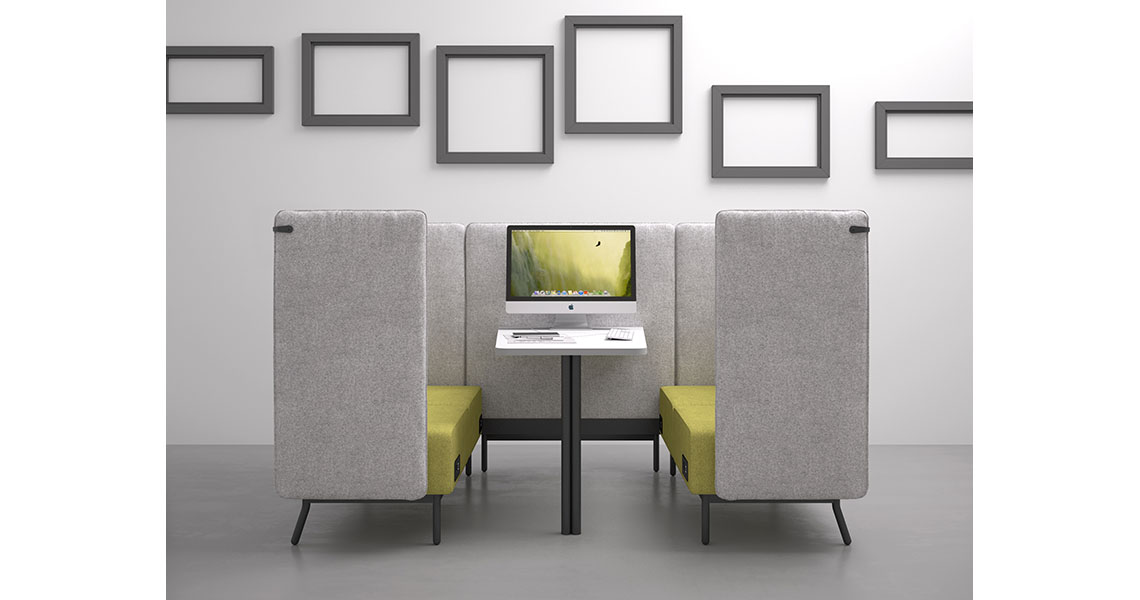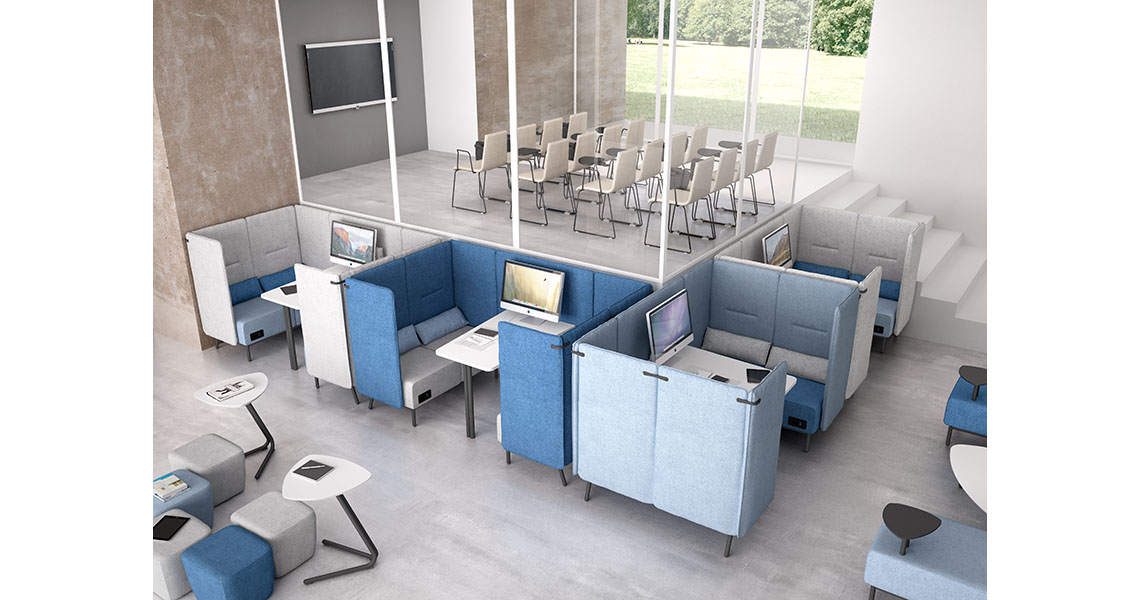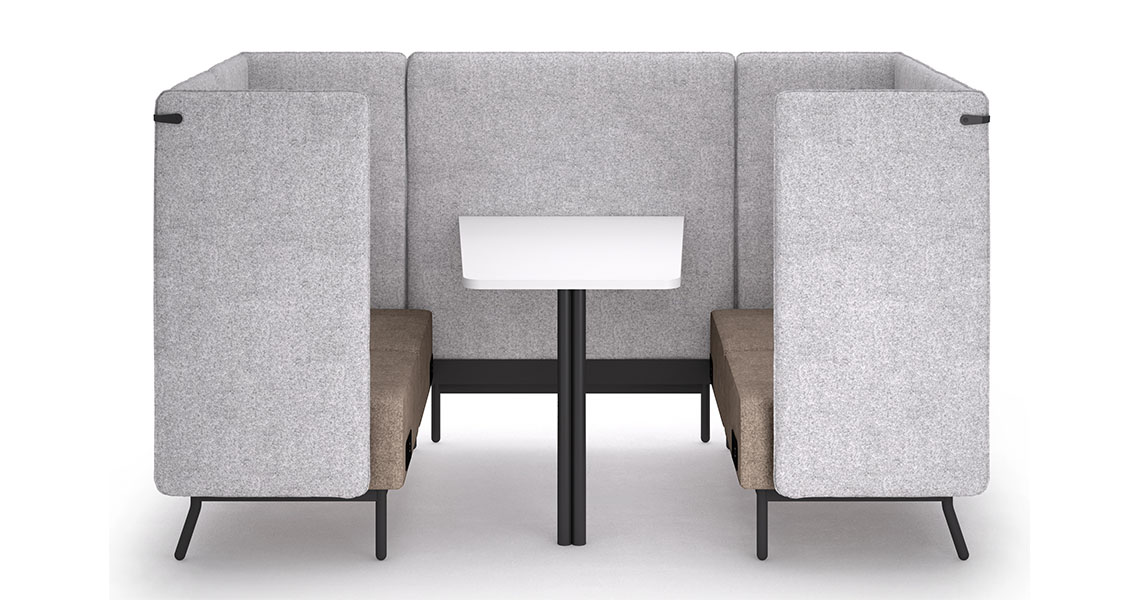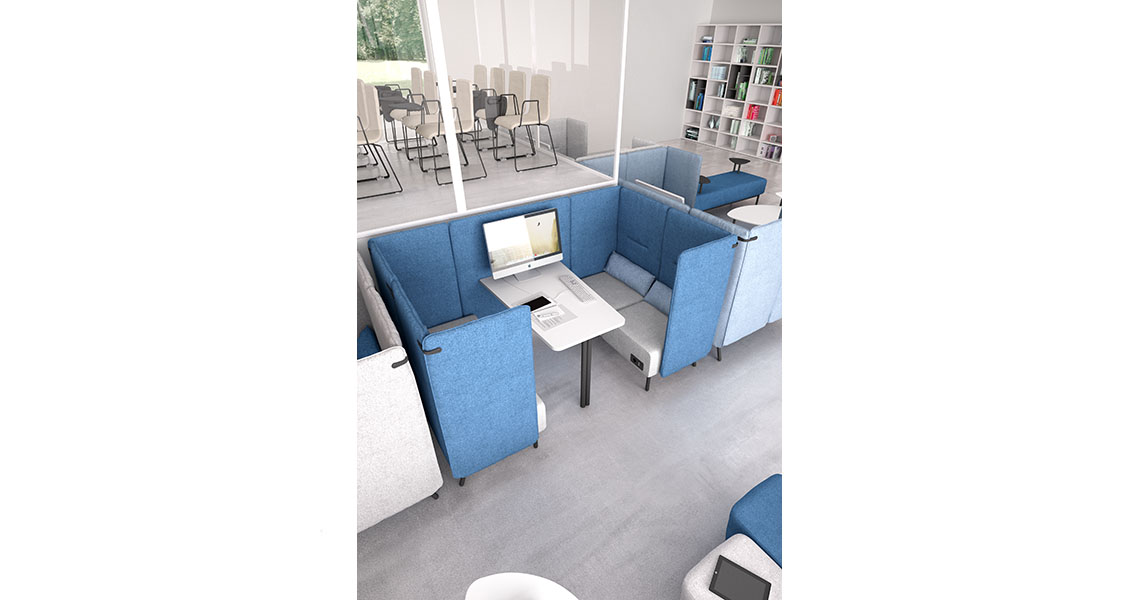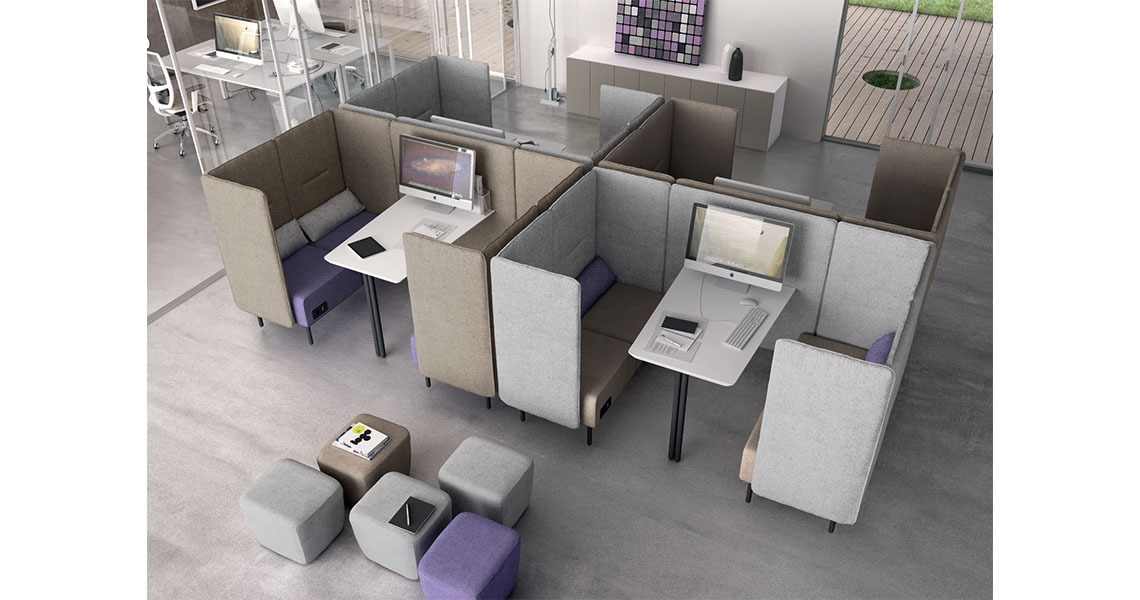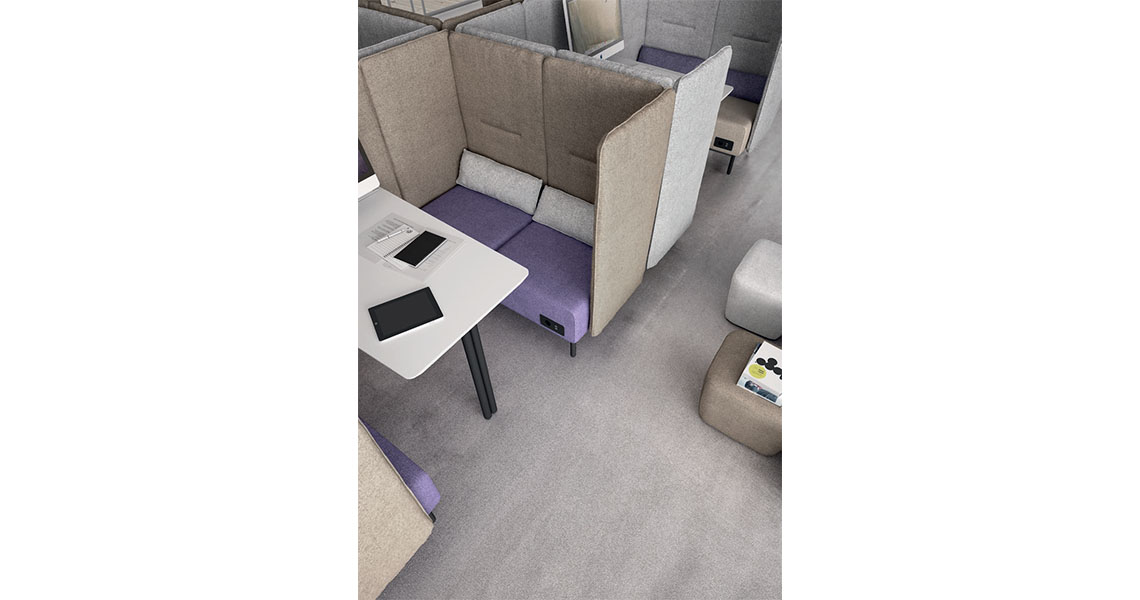quiet room, acoustic box or phone booth
Office pods, what are they?
Acoustic comfort has a fundamental role in the liveability of the environments where we spend our day.
Speech is silver, silence is gold
The Office pods era inside open space areas and the new trends in office design
Office pods are designed for privacy and comfort, and they are the perfect place for business meetings, because of their suitability for informal and social talks. Whether they are placed along a wall or in the middle of an open space area, office pods are useful to �make a room inside the room �, in order to build visual and soundproofed areas to hold meetings. Office pods must guarantee wellness in work places (use of ecosustainable materials in compliance with environment legislations) with the necessity to have a sustainability-focused perspective (adoption of open space environments), efficiency in spaces organization (desk sharing and office sharing), as well as the importance to pay more attention to chairs� ergonomics and usability.
Office pods: a place to listen
Office pods are perfect to create a �concentration area� to hold meetings or important phone calls. The special �pod� design minimises the environmental noise in order to have enough privacy. They are ideal for meetings or teamwork. The side walls are a kind of divider that allows focused debates and work, enjoying total privacy. Read more...
- they minimise background noise
- they optimise reverberation times
- they maximise intelligibility, which is the ability to precisely understand the words of a speaker
Along with open spaces, we have the consequent and necessary birth of quiet areas ( also called quiet room, acoustic box or phone booth ) in order to isolate the noise (coffee room, printing room, etc.) and protect meeting rooms. The main criteria describing Office pods� acoustic performances are:
- reverberation time: it describes the acoustic comfort inside the office pods
- soundproofing: insulation from external sounds
The sound perception clarity is linked to the sound duration in the environment. The sound duration is established through the reverberation time, a value that is considered optimal when it satisfies both intelligibility and intensity needs.
Office pods� visual and sound insulation
Specific researches establish that the man can �hear� with the eyes as well: this means that when we enter an enclosed area, our brain expects a certain echo (reverberation time). Therefore, it is wrong to think that the more the office pod is isolated, the better, because the reverberation time gets lower! It is important to look for an optimal reverberation time that changes depending on volume (it grows along with volume) and use (music, talks, etc.). The acoustic absorption in daily work places has become a necessity for everyone�s well-being. When an acoustic wave hits a perimeter surface in a closed environment, a part of its sound energy is absorbed and the rest is reflected. The reflected energy lasts for a certain period of time, due to the many following reflections produced. This phenomenon creates that annoying �echo effect�. Sounds are generated from waves that are reflected from hard surfaces with low absorption power, for example: concrete, wood, metal, marble, ceramic or glass. In environments built using these materials, annoying echoes and reverberations can take place and limit comfortable talks. The sound absorption material used to make office pods derives from the necessity to improve the acoustic in these environments. When an acoustic wave spreads into a permeable and elastic material (e.g. the walls of quiet rooms or phone booth) a part of the energy is absorbed thanks to internal frictions. In this case, the acoustic absorption is due to viscosity phenomenon: the sound wave dissipation takes place through the transformation of sound into kinetic energy when the sound passes through the material. The walls� surface of office pods, quiet rooms or phone booths is usually absorbent on both sides. Blending the wall panels� thickness and the covering fabric, we obtain an optimal acoustic absorption.
Open spaces� advantages and disadvantages
Open space areas guarantee advantages and disadvantages without a doubt. Some advantages are: an improvement in socialisation and an easier collaboration. Moreover, they give a sense of transparency and exclusivity, supporting the new employees generations. On the other side, the main disadvantage is environment noisiness. Consequently, they can lead to distraction, reduce privacy during talks and compromise the productivity. New work places must be enough flexible and able to guarantee both productivity and socialisation, satisfying the new employees� needs. The adoption of office pods, quite rooms and phone booths inside open space areas or work places does not presume to correct the echo inside them, but they can surely be helpful to achieve the acoustic wellness of working people.

